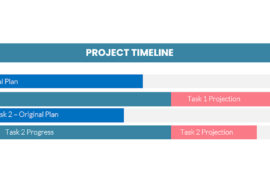 If you’ve read this column before you may have seen me invoke my favourite project management quotation. It is reputed to have come from Napoleon Bonaparte who once said “A battle plan lasts until contact with the enemy.”
If you’ve read this column before you may have seen me invoke my favourite project management quotation. It is reputed to have come from Napoleon Bonaparte who once said “A battle plan lasts until contact with the enemy.”
The problem with a lot of new project managers or with many newly created project management departments is that the focus stays too much on the planning process and not enough on what happens once the plan is put into action. If plans were perfect, we wouldn’t need project managers. It’d be great though don’t you think? We’d post the project schedule, and then just come back on the last day to pick up the product we’d planned.
Many organizations I visit are dissatisfied with the effectiveness of their project management process but continue to work on the details of the planning phase of the process with the notion that if the plan was just good enough, project management would improve or that if the plan had been better, the last project wouldn’t have been as late.
Project management is much more than just a great plan. The plan is important, of course but the weakest area of project management across the country that I see is often in the execution phase of the project. I’ll ask about the status of a project and hear how the project is clearly late and over budget but find that no one has a notion of exactly what elements are late or what elements have gone over budget or for how much or why.
Some of this can be explained away by a lack of communication. It’s one of the fundamental reasons I think, that collaborative project tools that tracks issues that arise during a project’s lifespan are such a hot item at the moment. Fundamentally though, the missing link is project tracking.
Project management should be a reiterative process. The results of one project should be able to be rolled into the next. We hear about this when experience project managers insist on a “lessons learned” phase after project completion but there is something much simpler that if often the last thing to be implemented in an organization’s project process. If you will simply follow the plan on a regular basis (weekly, monthly etc. based on the length of the project – and yes, this means every week.) and update the tasks with a notion of how many person-hours or person-days have been spent, what the new projected end-date is of the task and evaluate any impact on remaining tasks.
This exercise alone will give you an “as-built” schedule at the end of the project. Project managers in the construction industry are very familiar with this concept. “As-built” schedules are used in that industry to settle disputes after the project is over in that much-dislike phase of construction project management known as ‘litigation’. For those of us who don’t have post-project litigation to look forward to, the most valuable result of this exercise is to compare the as-built schedule with the original plan and find out how variant you were.
The first reaction to looking at this data is often shock followed immediately by a knowing look as though the data confirms what you’ve always suspected. The results of such analysis are often very revealing. You find out that you really do spend too much time on overhead type tasks such as meetings and that your resources are not available for project tasks 8 hours per day but more like 4 hours per day (No, I’m not kidding). Next you find out that the original estimates from the project team members who are the most optimistic were actually the most optimistic and that the actual project results were way over that plan. The converse can also be true, that the most pessimistic team members make the longest estimates.
If you collect this date, you’ll be able to return the results of have looked at it into your next planning process. You’ll be able to allow for pessimistic and optimistic attitudes. You’ll be able to look at completed projects phase-by-phase; determining if they are more or less likely to achieve the new targets for your most recent project.
This type of reiterative process is used frequently in plant maintenance type projects where the work is similar time after time and a realization in efficiency can mean virtually millions of dollars in regained opportunity cost. It is, unfortunately all too rare in high-tech projects. I know, some of you are ‘artistes’ who are certain that every project is unique and that no element is comparable to any other project but that’s mostly not true. There will almost always be some levels of similarity in projects in the same company.
If you are interested in seeing some of these results however, then you’ve got to do the toughest thing there is in implementing a project control system – you’ve got to collect the actuals. It seems like it should be the simplest thing but many project team members may be reluctant to deliver a precise accounting of the work they’ve done for fear that the data will be used against them. I know, I know, it would never happen at your organization – believe me, it happens in many, many places.
If you’re looking for a culture change that might result in a reiterative project process, then try starting with an automated timesheet that accounts to the activity level. There are a number to choose from that suit different types of requirements. Many of these systems will have extensive functionality for tracking and accounting for data but, go easy on the enforcement in the early days of implementation. Once entering the timesheet data becomes a habit you can gradually crack down on the quality of the entries. Some timesheet systems include interfaces to return data to your project scheduling system making ‘closing the loop’ even easier once you’re ready for it.
Remember, you can’t even begin a reiterative project process unless you’re collecting all the data required in the loop but for those who can go the distance, the rewards can be significant.




